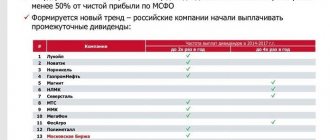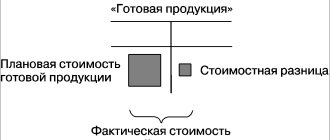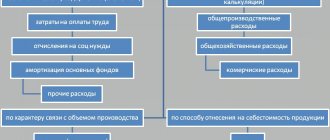Accounting for samples provided by suppliers
Samples are usually sent to trading firms by suppliers. They are free, and therefore the invoice shows a zero cost. However, in accounting, products are recorded at the market price.
IMPORTANT! In tax accounting, upon receipt of samples, non-sales income is generated in the amount of the market price. The formation of non-operating income is stipulated by Article 250 of the Tax Code of the Russian Federation.
Accounting for receipt of samples
When samples are received, this accounting entry is used: DT41 KT98. The market value of the sample is recorded on this account.
How to submit product samples for testing ?
If the invoice contains a price greater than zero, the transactions will be the same as when transferring any other product to the company:
- DT41, subaccount “Samples” KT60. Fixing the purchase price of the sample.
- DT19 KT60. Fixation of “input” VAT.
In most cases, the first wiring shown is used. Accounting will also depend on further actions with the sample: its implementation or lack thereof.
How to qualify product samples for tax accounting purposes ?
Samples will not be sold
The supplier may stipulate in the contract that the samples cannot be sold. In this case, they are necessary for demonstration (for example, at exhibitions) or for transfer to consumers free of charge. In this situation, assets must be accounted for as materials. These wires are used:
- DT10 KT41, subaccount “Samples”. The cost of materials is stated.
- DT44 KT10. Wiring is used when demonstrating samples. Involves writing off their value.
Each posting must be supported by data from primary documents. An example of such a document is an invoice, which indicates the cost of the sample.
Tax accounting
As part of tax accounting, the value of the assets in question can be classified as non-standardized expenses on advertising on the basis of clause 4 of Article 264 of the Tax Code of the Russian Federation. If , the value of the assets is also written off as advertising expenses. However, such a write-off can only be carried out when the invoice indicates the cost of the sample is greater than zero. If the cost is zero, the cost cannot be written off as an expense. If samples are provided to consumers free of charge, the value of the assets will not reduce taxable income.
It is acceptable to write off the cost of samples for advertising costs. However, this option is considered risky, since the distribution of demonstration models to a limited number of people is not considered advertising. Consequently, such spending on advertising may be considered unjustified, as stated in the letter of the Ministry of Finance dated December 15, 2010. If verified, such advertising expenses will be voided. The company may be fined. That is, there are two write-off options: safe and risky. Let's look at the wiring used within the safe method:
- DT91, subaccount “Expenditures not subject to accounting for taxation” KT10. Write-off of the cost of products transferred free of charge to the consumer.
- DT91 KT68. VAT accrual.
- DT99 KT68. Displays ongoing tax liability.
This method of accounting will not raise questions from regulatory authorities.
Accounting for samples to be sold
Often the supplier does not prohibit the sale of transferred objects. In this case, as a rule, the products are first demonstrated and then sold at a reduced cost. Sold samples are taken into account in the quality of either products or fixed assets. Some products need to be prepared for sale. In particular, installation and assembly are carried out. If no preparation is required, samples are recorded on account 41. Before sale, objects are transferred to the “Products for Sale” subaccount.
If preparation is needed, it is recommended to account for products according to DT account 01. This is due to the fact that this accounting method simplifies the accounting of costs for installation and assembly work. These costs are included in the initial cost. In addition, samples that require assembly are usually complex and bulky. Therefore, products can, in addition to demonstration, solve other problems. Therefore, accounting as part of fixed assets is the most reasonable.
Accounting for products to be returned to the supplier
Sometimes the supplier obliges the company to return the samples provided. Such temporary operation may be classified as safekeeping. That is, the company cannot accept products for balance. Therefore, they are recorded in off-balance sheet account 002.
IMPORTANT! Taxes are not charged upon receipt or return of products.
Product packaging
Regulatory regulation
For accounting purposes, the assembling of an item can be formalized as an operation for the production of a new type of product or as an operation for the assembling of a new type of product:
- if as a result of the operation the physical, technological or other characteristics of the goods change, then the newly created object must be considered as a finished product, and the “complete set” itself - as the production of finished products (clause 2, clause 7 of PBU 5/01);
- if, as a result of bundling, the characteristics of the goods included in the kit do not change, then the newly created object must be considered as a new type of product (set), the cost of which will be equal to the total cost of all component parts (clause 3, clause 6 of PBU 5/01) .
In our example, we will consider the second situation - packaging of goods, without changing their physical, technological or other characteristics.
The goods from which such a set is formed are accepted from the supplier and are accounted for in the usual manner as separate items on account 41 “Goods”. In the future they can be shipped:
- As a new product with the assignment of a separate item number, for which the corresponding analytics should be provided for account 41 “Goods”. In this case, in the implementation document, a set is selected, assembled by the Item Set .
- As independent goods sold to one buyer. Additional analytics are not required to take them into account, since in this case there is no set, and in the sales document the set is assembled with individual goods.
When creating kits, the seller may incur additional costs: wages for packers and packers, packaging materials, etc. They are part of the costs associated with the sale of goods and can be taken into account in one of the following ways:
- in the cost of a new product in account 41 “Goods” (Article 481 of the Civil Code of the Russian Federation, clause 6 of PBU 5/01, clauses 68, 71, 224 of the Methodological Instructions, approved by Order of the Ministry of Finance of the Russian Federation dated December 28, 2001 N 119n);
- as distribution costs in account 44.01 “Distribution costs in organizations engaged in trading activities” (chart of accounts 1C).
Fix the chosen method in your accounting policy.
The seller is obliged to transfer to the buyer all item items included in the kit at the same time, unless other conditions are provided for in the contract. The obligation to sell a set of goods to the buyer is considered fulfilled from the moment the seller transfers all goods included in the set (Article 479 of the Civil Code of the Russian Federation).
Accounting in 1C
The assembling of goods is documented in the document Assembling Items, type of operation Assembling in the section Warehouse - Warehouse - Assembling Items.
In the header of the document please indicate:
- Set - a new product (set) that will be received after completion;
- Quantity - the number of kits that will be assembled;
- Accounting account - accounting account for the set.
In the table section, indicate:
- Component - a product that is included in the kit;
- Quantity - the number of goods transferred for picking;
- Accounting account - filled in the document automatically depending on the settings in the information register Item Accounting Account , it can be changed manually.
For the item , the default is set to: PDF
- Accounting account - 41.01 “Goods in warehouses”.
Find out more about setting up item accounting accounts
Postings according to the document
The document generates the posting:
- Dt 41.01 Kt 41.01 - the cost of the new product (set) has been formed. The cost of goods that are components is written off according to the average (the write-off method is specified in the accounting policy PDF).
Control
Let's check the correctness of the calculation of the cost of the kit in 1C. To do this, we will generate a report : Turnover balance sheet for account 41.01 “Goods in warehouses”.
The cost of the new product Dining group “Angelica” in 1C was 33,000 rubles, which corresponds to the check table. Therefore, the cost of the 1C kit is formed correctly.
Documenting
The organization must approve the forms of primary documents, incl. product packaging document. In 1C, the Item Acquisition .
The form can be printed by clicking the Item Assembling document Item Assembling . PDF
Test yourself! Take a test on this topic using the link >>
See also:
- Setting up item accounting accounts
- Directory Nomenclature
- Loading prices Items from Excel
- Setting item prices
Did the article help?
Get another secret bonus and full access to the BukhExpert8 help system for 14 days free of charge
Related publications
- Test No. 10. Packaging of goods...
- How is the bundling of goods regulated in 2021? Having examined the step-by-step instructions for bundling goods, it was discovered that PBU 5/01...
- Equipment set Good evening. We are a trading organization. We buy equipment and accessories…
- Packaging of imported goods Good afternoon! We purchased imported goods. We assemble and sell it...
Accounting for exhibition samples
Samples are usually used during exhibitions. Let's consider all the wiring that is used when exhibiting products at exhibitions:
- DT41-5 KT41-1. Transfer of products for display at the exhibition. Primary document (hereinafter referred to as PD): invoice.
- DT41-1 KT41-5. Transfer of samples to the warehouse after the end of the exhibition. PD: invoice.
- DT91-2 KT14. Formation of a reserve to reduce the cost of the demonstration model. PD: product assessment report, order to reduce the cost, certificate of calculation.
- DT62 KT90-1. Recognition of sales revenue. PD: waybill.
- DT90-3 KT68. VAT accrual on sales. PD: invoice.
- DT90-2 KT41-1. Write-off of actual cost. Basis: accounting certificate.
- DT14 KT91-1. Reinstatement of the reserve for depreciation. Reason: reference-calculation.
Selling samples is the most reasonable solution, as it allows the company to reduce costs.
Income tax
If the samples are transferred to the company free of charge and their return is not expected, they are considered transferred free of charge on the basis of paragraph 2 of Article 248 of the Tax Code of the Russian Federation. Products are recognized as the property of the company on the basis of Article 38 of the Tax Code of the Russian Federation, Article 128 of the Civil Code of the Russian Federation. The company needs to recognize non-operating income. Recognition is necessary for tax purposes.
Income estimates are based on market prices. The cost cannot be less than the cost of production or purchasing samples. Sample cost data is confirmed using these documents:
- Conclusion of the person conducting the assessment.
- Price list of a company selling similar products.
- Information from the media.
- Agreement between supplier and seller.
The date of receipt of income is considered to be the date on which the act is signed by both participants.
PROBLEMS OF REGISTRATION OF EXPERIMENTAL SAMPLES AND MOUNTINGS
Intangible assets are a special type of non-current assets that do not have a tangible form, but are capable of generating income for the owner for a long time, directly participating in the financial and economic activities of an economic entity. The problematic point is the identification of an intangible asset, that is, its separation from other types of assets, a reliable determination of the initial cost.
Despite the certainty of the concept of “intangible assets” in the practical activities of an economic entity and its accounting service, difficulties often arise associated with the identification of the accounting object. The greatest controversy is caused by the results obtained during research and development work (R&D).
Interest in accounting for material objects, namely prototypes and mock-ups created as part of research and development work, is justified by the fact that the costs of their creation can be taken into account as part of a separate material object (fixed assets, equipment, materials ), and as part of the obtained intangible R&D results.
Let's consider the features of legal regulation and problems of accounting and analytical procedures related to the registration of prototypes and mock-ups.
When creating an intangible asset of this kind, in accordance with the rules for forming the initial cost of an object, expenses include amounts paid to third parties for the performance of work or provision of services under contracts for the performance of research, development or technological work. Research and development work involves obtaining a result, which, depending on the nature of this work, will be different.
As part of applied research work (R&D), a specific sample (type of product, type of material) can be created or research into the features of its functioning and application can be carried out [3; clause 1.2.3]. In the process of carrying out research, mock-ups, models, experimental samples (hereinafter referred to as mock-ups) are formed to experimentally test the possibility of creating a product sample and determine its technical characteristics, verify the correctness of the results of theoretical research and select the optimal technical and design-technological solution.
In turn, when carrying out development work (R&D), technical documentation (design and technological) is developed, prototypes are manufactured, tested and accepted [1; clause 4.8]. The result of these works is a prototype product, manufactured according to newly developed working documentation for verification by testing of compliance with its specified technical requirements in order to make a decision on the possibility of putting it into production and (or) use for its intended purpose [2; clause 8].
Depending on the different definition of the result of research and development work, the procedures for registering them as a corresponding object of non-current assets, reflecting them in financial statements, as well as calculating the tax base based on their attribution to a specific type of property of an economic entity will differ. Incorrect calculation of one tax can lead to numerous tax violations.
When registering prototypes and mock-ups, the following most common problems can be identified:
– identification of classification characteristics in order to assign them to one or another group of non-current assets;
– compliance of the work performed with R&D contracts;
– identification of the obtained R&D results;
– correlation of the obtained R&D results with the development of new products or improvement of previously created products.
All doubts regarding the attribution of expenses to R&D must be eliminated, precisely defined in accordance with regulations and documented. However, to date, operations to identify and register prototypes and mock-ups created as part of R&D are not clearly regulated.
Due to the wide range of work performed and the large number of participants using various forms and methods of organizing work at various stages of the life cycle of industrial products, its development and production is carried out on an individual basis.
In practice, it is very difficult to distinguish between work to improve manufactured products (improvement of manufactured products) and work to create new products based on previously created ones (modernization of manufactured products), as well as to determine the future purpose of products for serial production. A specific feature of R&D is that for these types of work there is a high risk of not obtaining, for objective reasons, the result established in the technical specifications. The existing ambiguity is explained by the unknown, the uncertainty of the future use of the result of the work, since it is new.
It is also problematic to determine the fundamental features characteristic of innovations. Difficulties can arise after several years of working documentation for the obtained R&D result, in particular, during inspections by tax authorities and the absence of explanations from the developers that are understandable from an economic point of view.
Due to the ambiguous definition of the results of work performed when registering intangible and tangible objects created within the framework of the same contract, risks arise associated with additional tax assessments during audits of organizations.
Due to the different procedures for recording intangible and tangible objects, when registering, it is necessary to correctly identify the resulting R&D result.
An ambiguous point when reflecting prototypes and mock-ups created in the process of R&D is the purpose of their use. Prototypes and mock-ups serve as a means of testing and testing relevant technologies (projects) and are not initially intended to be used as fixed assets, equipment or inventories. The purpose of creating prototypes and mock-ups is to ensure the achievement of the results of relevant R&D, and not to ensure the current economic activities of the organization. However, in practice, a prototype is used in the activities of an organization as a material object (for example, at exhibitions, in a museum, as a component for other objects), can generate income, and is not intended for sale to third parties.
In addition, R&D expenses are written off without any examination of the efficiency and targeted use of funds in full, while organizations that received a positive R&D result are in a worse position, since they write off expenses evenly, and not at a time (if the result is negative) .
The accounting provisions “Accounting for fixed assets”, “Accounting for expenses for research, development and technological work”, “Accounting for intangible assets” do not disclose an unambiguous position as to what type of asset prototypes and mock-ups should be registered .
The current state of legal regulation allows us to conclude that it is necessary at the level of national standards to regulate methodological approaches to identifying the work performed and the results of R&D and the correct reflection of R&D results in accounting and reporting.
Bibliography
1. State standard of the Russian Federation GOST 15.201-2000 “System for the development and production of products. Products for industrial and technical purposes. The procedure for developing and putting products into production” was put into effect by Decree of the State Standard of Russia dated October 17, 2000 No. 263-Art.
2. State standard of the USSR GOST 16504-81 “Interstate standard. System of state testing of products. Testing and quality control of products. Basic terms and definitions" was put into effect by Decree of the USSR State Standard of 08.12.1981 N 5297.
3. Recommendations R 50-605-80-93 “System for the development and launch of products into production. Terms and definitions”, approved by order of VNIIstandart dated 07/09/1993 No. 18.






